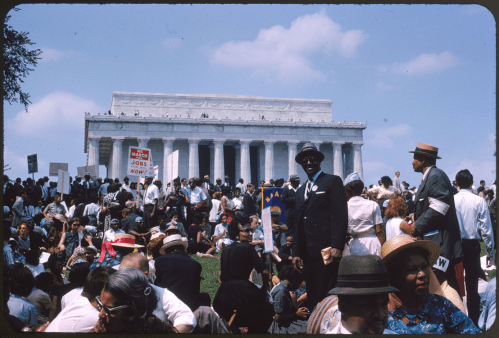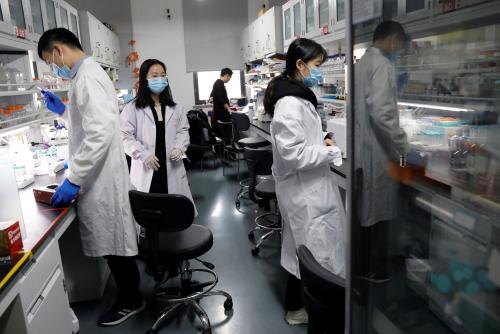A defining feature of the post Cold War era is the large number of persons forcibly uprooted within their own countries as a result of civil wars, policies of “ethnic cleansing,” generalized violence and systematic violations of human rights. Called internally displaced persons (IDPs), there are as many as 20 to 25 million worldwide who remain at risk within the borders of their own countries. Africa has as many as 10 million, Europe and Asia some 5 million each, and Latin America up to 2 million.
Unlike refugees who cross national borders and have access to an established system of international protection and assistance, those who are displaced in their own countries suffer from the absence of a legal and institutional basis for receiving protection and assistance from the international community. Because their own governments fail to or are often unable to provide for their well-being and security, the internally displaced are frequently at risk of starvation, suffer from high rates of preventable disease and are vulnerable to severe human rights abuse. Whether in Kosovo, the Sudan, Sierra Leone or Afghanistan, the internally displaced are in need of international attention, as news reports bring graphic descriptions of mass killings, deliberate starvation, slavery, mutilations, forced conscription and sexual violence.
In 1992, to gain a better understanding of the problem, the Secretary-General appointed a Representative on Internally Displaced Persons, at the request of the Commission on Human Rights. The Representative, Dr. Francis M. Deng, a former diplomat from the Sudan, visited 13 countries with serious problems of internal displacement, established dialogues with governments, developed a legal framework for dealing with internal displacement, and has generally served as a catalyst, raising international awareness to the problem and advocating for better protection, assistance and reintegration and development aid for the internally displaced.
In large measure, Dr. Deng found that the victims of displacement in internal conflicts, especially when race, religion or ethnicity play a role, are often not viewed by their Governments as citizens to be protected and assisted, but rather as part of “the enemy” to be persecuted. As a conceptual framework for international efforts, Deng put forward the doctrine of sovereignty as responsibility.
This means that a State can claim the prerogatives of sovereignty only so long as it carries out its internationally recognized responsibilities to provide for the security and well-being of its population. If a State is unable to do so, it is expected to request outside offers of aid. If it refuses to do so, and deliberately obstructs access, this legitimizes the involvement of the international community, in actions ranging from diplomatic initiatives to political pressure, sanctions, and as a last resort, military intervention.
To provide the international community with a basis for action, Dr. Deng developed a legal framework for the internally displaced. In 1998, he introduced the Guiding Principles on Internal Displacement into the United Nations. Prepared by a team of international lawyers, the Principles are an important tool for measuring the behavior of governments and insurgent groups prior to displacement, during displacement, and during return and reintegration. They set forth the rights of the internally displaced and the obligations of the relevant authorities under international law and practice. Since internally displaced persons often reside in areas controlled by non-State actors, the extension of the Principles to them is an important means of promoting protection.
Although not a binding legal document, the Principles have quickly gained, in a short time, standing and authority. The Commission on Human Rights and Economic and Social Council have acknowledged them, the Inter-Agency Standing Committee (IASC) has endorsed them, and the major international humanitarian and development organizations are disseminating them and asking their staff to apply them in the field. They are also being widely disseminated by regional organizations and non-governmental organizations (NGOs). As they become more widely known, it is expected that they will lead to stronger advocacy on behalf of the internally displaced and in time, better observance.
A more consistent, vigorous response is also needed from international organizations when persons are forcibly uprooted and subjected to starvation and other human rights abuses in their own countries. Over the past decade, an array of international humanitarian, human rights and development organizations have broadly interpreted their mandates or increased the scope of their activities to provide aid to IDPs, most notably the United Nations High Commissioner for Refugees (UNHCR), the United Nations Children’s Fund (UNICEF), the World Food Programme (WFP), the United Nations Development Programme (UNDP), the World Health Organization (WHO), the International Organization for Migration (IOM), and the Office of the High Commissioner for Human Rights (OHCHR). But the system is largely ad hoc: organizations basically pick and choose the situations in which they will become involved, with the result that large numbers of the IDPs go without adequate international attention.
To remedy this defect, a strong central point is needed to rapidly assign responsibility to different agencies in serious situations of internal displacement and promote a division of labour. With this in mind, the Secretary-General in 1997 requested the Emergency Relief Coordinator (ERC), Sergio Vieira de Mello, to serve as the system’s central point for coordinating assistance to the internally displaced. To date, the ERC has taken a number of administrative steps. The IDPs have become a standing item on the agenda of inter-agency bodies, a senior adviser has been appointed in Mr. Vieira de Mello’s office to liaise with focal points on IDPs in the different agencies (a recommendation proposed by Dr. Deng), a global information data base on IDPs has been set up with the help of the Norwegian Refugee Council, and the Secretary-General’s Representative on Internally Displaced Persons has been invited into the inter-agency decision-making process.
Whether these institutional arrangements will translate into actual improvements on the ground remains to be seen. One encouraging sign is the forthcoming publication by the ERC of a manual and a handbook which give examples to field staff of what steps they can take on the ground to better protect and assist the IDPs.
Another promising development is that Mssrs. Deng and Vieira De Mello, and the High Commissioner for Human Rights, Mary Robinson, are focusing attention on the need for greater protection of the physical safety and human rights of the internally displaced. In too many emergencies, providing food, medicine and shelter has taken priority over the equally compelling need of persons to be protected against assault, forcible conscription, land mines, rape and other egregious human rights abuses. Although most international organizations do not have experience in this kind of protection, the International Committee of the Red Cross does have expertise in creating protected areas, evacuating people, and interceding on their behalf. UNHCR also has begun to undertake protection activities for the IDPs to whom its responsibility extends, and UNICEF, OHCHR and NGOs have been exploring the steps they might take to enhance protection. Certainly, increasing presence when protection problems arise can be effective if combined with actions such as monitoring protection problems, reporting them to those who can act upon them, and joining with other agencies in vigorous advocacy and intercessions on behalf of the displaced.
Of course, in some situations the only way protection is possible is through military and police action. But neither military action nor humanitarian assistance alone can substitute for the political settlements needed to resolve the disputes and inequities at the heart of many conflicts. Internal displacement, after all, is but a symptom of a far deeper problem within a society. This underscores the need for the United Nations to expend the energy and resources to prevent or contain crises, take early action when there are warning signs, bring pressure to bear on warring parties, insist on the mediation and management of disputes, and offer development aid, investment and debt relief to those who will work to bring conflicts under control.
In today’s world, internal conflicts have replaced interstate wars as the main source of displacement. A more comprehensive look at humanitarian and human rights crises is therefore essential. They produce not only displacement across borders but within countries. International strategies are needed to address the totality of the problem. This means focusing greater attention on the plight of the internally displaced and lending greater support to the Representative of the Secretary-General on Internally Displaced Persons to take action on their behalf.


Commentary
Refugee at Home: The World of the Internally Displaced
September 1, 1999